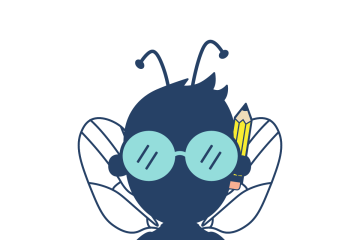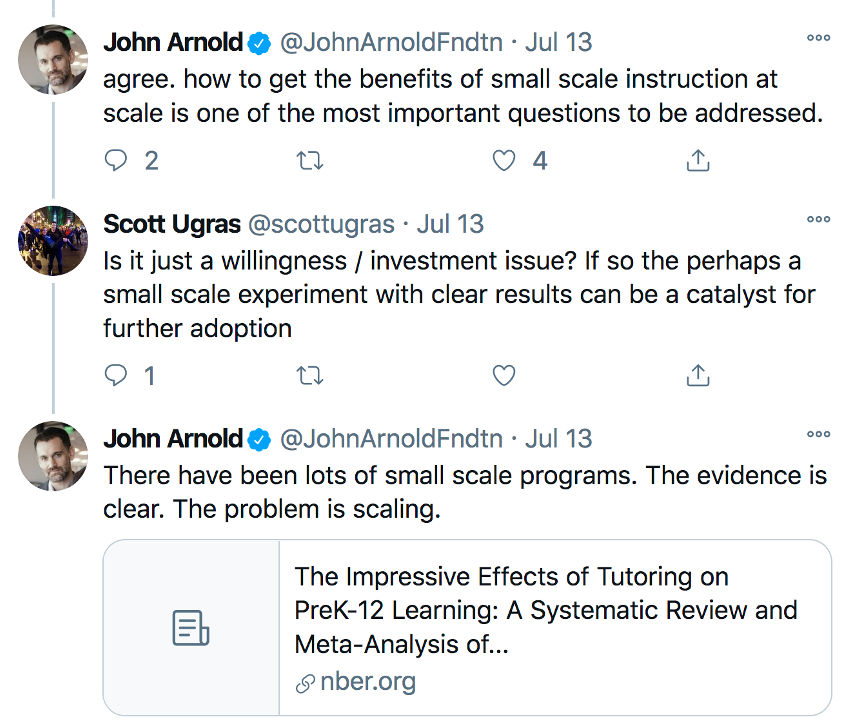Study after study has found that urban charter schools, and non-profit charter networks in particular, tend to be more successful at boosting student achievement than traditional public schools in similar settings. But why?
In recent years, the Thomas B. Fordham Institute has published several studies that provide partial answers to this question. Student-Teacher Race Match in Charter and Traditional Public Schools, by American University’s Seth Gershenson, found that Black students in North Carolina charters are about 50 percent more likely to have a Black teacher than their traditional public school counterparts—which may help to explain why Tar Heel State charters are more effective at boosting the achievement of Black students. Similarly, Teacher Absenteeism in Charter and Traditional Public Schools, by Fordham’s David Griffith, found that teachers in traditional public schools were almost three times as likely to be chronically absent as those teachers in charter schools.
Yet one riddle continues to perplex: We know from copious research that new teachers tend to be less effective than educators with more experience. But despite having a higher proportion of junior staff, urban charter networks often outperform their district peers.
So are charter school teachers just higher performing to begin with? Or are charter schools and/or charter management organizations (CMOs) particularly effective at helping new teachers improve faster?
Although there are plenty of well-known differences between charter and traditional public schools, very little is known about how teachers in charters improve over time—a gap that seems well worth filling, since schools of all types should be able to learn from one another when it comes to teacher recruitment, development, and retention.
Toward that end, for our new report, Teacher Effectiveness and Improvement in Charter and Traditional Public Schools, we invited George Mason University associate professor Matthew Steinberg and University of Pennsylvania doctoral student Haisheng Yang to dig into how teacher effectiveness varies and evolves across traditional and charter public schools, as well as within the charter sector. Dr. Steinberg has published a number of studies on teacher quality and effectiveness, finance reform, and school discipline, including Fordham’s first report on discipline policy. He and Yang have also collaborated to examine principal mobility and professional development in Pennsylvania.
In Teacher Effectiveness and Improvement in Charter and Traditional Public Schools, they use data on teachers who worked in Pennsylvania’s charter and traditional public schools between 2007–08 and 2016–17 to investigate teacher effectiveness, improvement, and mobility across and between sectors. Pennsylvania is an ideal setting for such an investigation because the growth of its charter sector mirrors national trends, and because it has a healthy supply of both CMO and stand-alone charter schools. Accordingly, Steinberg and Yang examine academic outcomes for math and English language arts (ELA) for all students in grades three through eight, including those enrolled in both types of charter schools.
We strongly encouraged you to read the full report, which is thought-provoking, concise, and full of interesting statistics and figures. But for now, here’s a summary of the key findings.
- On average, teachers in Pennsylvania charter schools are more effective in English language arts but less effective in math than teachers in traditional public schools. However, teachers in CMO-run schools are more effective in both subjects.
- Like teachers elsewhere, teachers in Pennsylvania become more effective as they gain experience, but teachers in the state’s CMO-run schools improve more quickly than teachers in its traditional public schools or standalone charters.
- Pennsylvania charter schools struggle with teacher retention, but CMOs retain and promote more effective teachers into leadership roles.
According to Steinberg and Yang, these findings suggest that Pennsylvania’s CMOs are succeeding with “a fundamentally different approach to human capital” than the state’s traditional public schools. But how exactly are they managing that?
In our view, the study offers evidence for two potential drivers. First, the second and third findings suggest that CMOs are better at systematically identifying and promoting their most effective teachers to instructional leadership positions (e.g., literacy coach or master teacher) where they can help other teachers improve—and by extension, help more students.
Second, the data indicate that CMOs are more likely to part ways with their least effective teachers. In fact, over 30 percent of CMO teachers exit their schools annually—voluntarily or involuntarily. Yes, that’s a lot of turnover, and some of it is surely due to tough working conditions (including high expectations for teachers) and low pay (due to the substantial gaps in per-pupil funding between the sectors). Still, insofar as it’s attributable to the exit of ineffective teachers, higher turnover is a feature rather than a bug. And insofar as teachers who don’t improve are more likely to leave, higher turnover might also explain why teachers who stay in CMO-run schools improve so quickly
Of course, it’s also possible that CMOs are doing a better job of recruiting smart and highly motivated teachers who are likely to improve more quickly. For example, one “School Leader’s Toolbox” published by The New Teacher Project (now TNTP) urges schools to “define the Ideal Teacher...based on what type of teacher has been successful in your school” and to use the hiring process to set expectations by “communicat[ing] what is exciting and challenging about working at your school so that candidates are prepared for the school’s culture and unsuitable candidates self-select out of the process.” Perhaps CMOs do a better job of following this advice.
In addition to these explanations, there are other possibilities (though, without data, we can only speculate). For example, prior research finds that CMO principals are more likely than their district peers to (1) report that their schools define and enforce a comprehensive set of behavioral standards, and (2) require parents or students to sign an agreement acknowledging their responsibilities. So perhaps these common, schoolwide expectations around behavior help new teachers learn to manage their classrooms more quickly, allowing them to focus on their craft.
Or perhaps CMOs’ practice of deploying a common curriculum makes it easier for their new teachers to improve. As our colleague Robert Pondiscio has written, a schoolwide curriculum fundamentally changes the nature of a teacher’s job, especially if he or she is new to it. Rather than spending countless hours fumbling in the dark—or at least on the Internet—for instructional materials, she can spend that time studying lesson plans, building relationships with families, and offering feedback on student work. “Expecting teachers to be expert pedagogues and instructional designers,” explains Pondiscio, “is one of the ways in which we push the job far beyond the abilities of mere mortals.”
Each year, American schools hire approximately 200,000 new teachers. And because turnover rates have increased, 38 percent of K–12 teachers in the U.S. now have less than ten years of experience. These numbers surely make the case for doing more to retain great teachers, but they also show just how important it is that we help new teachers get better faster. As it turns out, accelerating teacher improvement is yet another area where all schools could take a page from the success of our nation’s most effective charter school networks.








